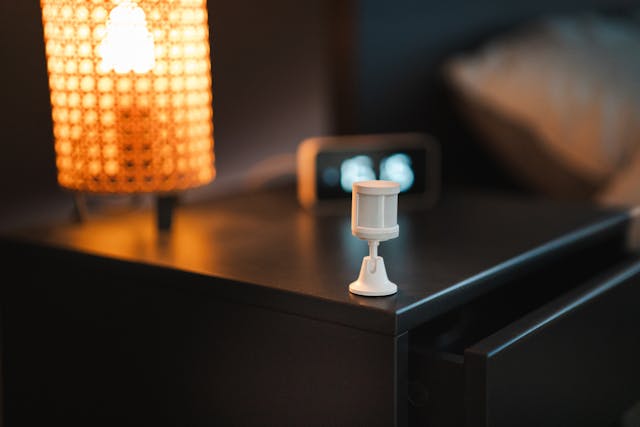
How does a motion detector work? There are several different methods. They can use infrared light, microwave radiation, ultrasound, video, or electromagnetic radiation.
There are many uses for motion detectors and not all of them are for security systems. If you have used an automatic door, or walked into a room and had the lights come on without you pressing a switch, you have taken advantage of a motion detector. These detectors were invented during World War 2 and came off the back of the invention of radar. The theory behind radar was discovered in the late 19th century by Heinrich Hertz (the man the Hertz is named after – not the rent-a-car company!). He discovered that sound waves bounce of metallic objects. After World War 1, planes improved rapidly and most people knew that if there was another war, planes would feature heavily. Scientists wondered if they could use the sound to detect them。Some of the first experiments used “listening ears”, some of which you can still see in the UK. These were giant shaped pieces of concrete that directed soundwaves from incoming planes towards a listener. They person could tell planes were coming, but not how many or where they were coming from. By the start of World War 2, a top-secret radar system had been set up in the UK and gave them a huge advantage. A man called Samuel Bagno worked on the radar and towards the end of his war he realized that his knowledge could be made to detect other types of motion. He started work on an ultrasonic alarm that would go off when it detected the motion of a person. This was the first motion detector.
So, how do motion detectors work? There are several kinds. The first kind are the ones that still work on the original method. These are ultrasound motion detectors. The rely on the discovery that Hertz made and they bounce sound waves off the objects in the room. The emit an ultrasonic sound wave that is above 20 kHz. That is far too high for us to be able to hear. The highest frequency we can hear is 20 kHz, and that is only if the room is completely silent and our ears are still very young. Dogs would be able to hear it, though, because they can hear, depending on the breed, frequencies up to 65 kHz. The motion detector sends out the sound wave and picks it up when it bounces back. If a person walks into the field of the soundwave, it will be deflected and the motion detector will detect the doppler shift, which is a shift in the frequency of the sound wave. This will trigger the alarm or switch the lights on.
The more common type of motion detector is a passive infrared detector. These are more common because they are cheap and they last much longer. An ultrasonic detector has to constantly sound out a high frequency sound wave, which requires energy and will run down the battery. A passive infrared detector works by measuring the amount of infrared energy that is being emitted in the room. The detector has an infrared radiation sensor that is set in two or more places on the detector. These infrared detectors are calibrated so that the ambient infrared in the room is zero. If a person walks through the room, they will give off more infrared energy than is already in the room. We give off between 3 and 50 microns of infrared radiation. The sensor in the detector on the side of the human will register more infrared than the sensors on the other sides of the detector and this difference will trigger the alarm or switch the lights on. These types of detectors last longer because they only detect and don’t emit anything. They can also be calibrated to a specific amount of infrared so that small pets don’t set them off.
Microwave radiation and electromagnetic radiation work on the same principle as an ultrasonic motion detector. They send out a constant stream of radiation and measure the frequency of what comes back.
The last type of detector are video detectors. These have only become possible in recent years as technology has evolved. A camera with a live stream of a room will be connected to a computer with an AI system that is trained to detect motion. The computer only has to compare all of the images to see if anything has changed. These systems are far cheaper now than they used to be and are very common because they are motion detectors, but they can also record as well. And this is what I learned today.
Photo by Jakub Zerdzicki: https://www.pexels.com/photo/smart-home-motion-sensor-17547230/
Sources
https://medcraveonline.com/IJBSBE/IJBSBE-04-00138
https://www.safewise.com/home-security-faq/how-motion-detectors-work
https://www.gelighting.com/inform/how-motion-sensors-work
https://en.wikipedia.org/wiki/Motion_detector
https://www.radarmuseum.co.uk/history/world-war-two
https://en.wikipedia.org/wiki/Heinrich_Hertz
https://www.ti.com/lit/an/slaa907d/slaa907d.pdf?ts=1713585237007
